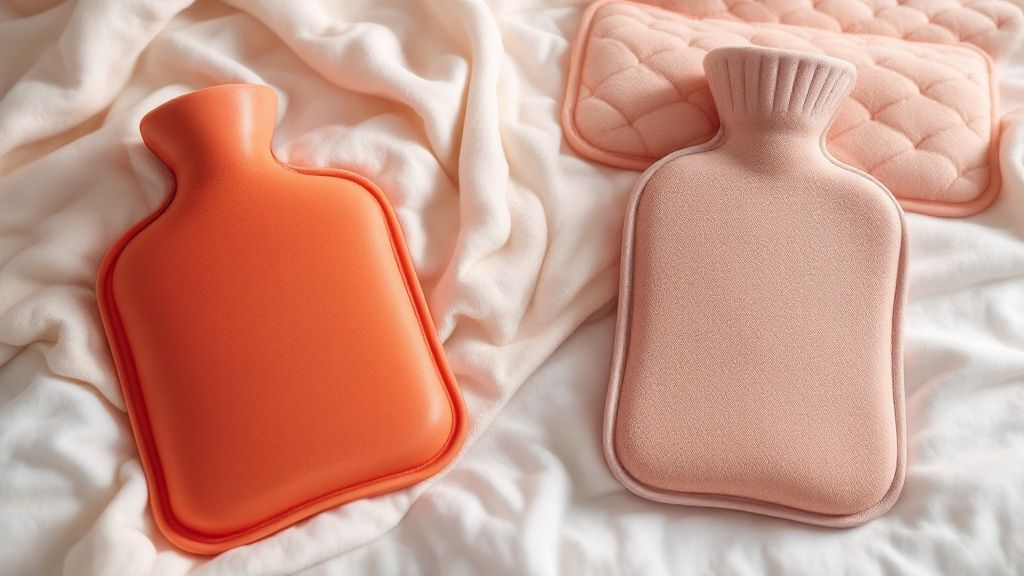Heat therapy serves a pivotal function in reducing inflammation, acting as an effective remedy for various conditions. When you apply heat to an affected area, it enhances blood circulation, which in turn helps in reducing inflammation by supplying oxygen and nutrients to promote healing. The types of heat therapy available range from simple heating pads and warm baths to more advanced options like heat wraps. Each type of heat therapy can be tailored to your specific needs, making it a versatile solution for various causes of inflammation.
Furthermore, heat therapy for muscle recovery is particularly beneficial after strenuous physical activities, assisting in relaxing muscles and accelerating healing processes by soothing inflammation and tension. By understanding these dynamics, you can make informed choices about integrating heat treatments into your wellness routine to manage and prevent inflammation effectively.
Understanding Inflammation
Inflammation is a natural response by your body's immune system to protect against infection and injury. It involves a surge of blood cells to the affected area, promoting healing but often causing redness, heat, and swelling. Although it's a necessary part of recovery, persistent inflammation can lead to discomfort and exacerbate chronic conditions. Understanding how it works is fundamental in addressing various health concerns related to inflammation.
One unpopular view suggests that inflammation might not always be something you must combat immediately. Some experts argue that in certain contexts, allowing inflammation to persist naturally could aid in the healing process more effectively than immediate intervention. This perspective encourages you to discern when it's essential to interfere with inflammation and when it's beneficial to let the body heal independently.
Heat therapy emerges as a compelling avenue for alleviating inflammation, offering solutions that range from simple methods to more comprehensive techniques. When considering the types of heat therapy, you discover options like microwavable heat packs, electric heating pads, and infrared saunas. Each approach has unique benefits, and selecting the right one can play a crucial role in easing discomfort and fostering recovery.
When inflammation is linked to physical exertion, heat therapy for muscle recovery becomes particularly advantageous. By applying heat to sore muscles, you enhance circulation and relaxation, which supports the body's natural healing process. This practice not only mitigates existing inflammation but also helps prevent future occurrences, promoting long-term muscle health and resilience.
Effectively managing inflammation requires recognizing its nuances and understanding its dual nature. It’s about finding a balance between utilizing supportive treatments, like heat therapy, and appreciating the body's inherent healing capabilities. Knowing when to engage in therapy can make a significant difference in your overall well-being and comfort.

Introduction to Heat Therapy
Heat therapy is a therapeutic practice used to alleviate pain and enhance the healing process by applying warmth to your body. It is particularly effective for reducing inflammation and treating both acute and chronic muscle pain. The warmth helps to increase blood flow, soothe sore tissues, and promote relaxation, providing you with a sense of comfort and relief.
Different types of heat therapy offer various methods to target your needs, ranging from simple hot towels to more technologically advanced heat wraps and saunas. By exploring these options, you can find the best type to address specific discomforts, whether for everyday pains or aiding in muscle recovery after intense activities.
To maximize the benefits of heat therapy, try incorporating it into your daily routine. You could use a heating pad after exercise sessions or unwind with a warm bath before bedtime. This consistent application can help manage inflammation more effectively over time, providing sustained comfort and promoting overall muscle health.
When introducing heat therapy as part of your self-care, it's advisable to start with moderate heat to prevent any skin irritation. Adjust the temperature according to your comfort level and pay attention to your body’s response, ensuring that the warm therapy offers the best results for easing inflammation and supporting muscle recovery.
How Heat Therapy Reduces Inflammation
The application of heat therapy is an effective method to soothe inflammation and promote healing in various conditions. By applying heat, you encourage an increase in blood circulation, which supplies additional oxygen and nutrients to the inflamed areas. This enhanced blood flow helps in eliminating the waste products of inflammation, thus facilitating quicker relief and recovery.
Another vital aspect of heat therapy is its ability to relax muscles and surrounding tissues, which aids in reducing tension and stiffness. This relaxation can significantly contribute to the alleviation of discomfort associated with inflammation. Among the types of heat therapy, options such as heating pads, warm baths, and infrared saunas provide targeted relief, enabling you to choose the most suitable method based on specific needs.
In the coming years, the integration of heat therapy into holistic health practices is likely to become a standard approach in managing chronic inflammation. With ongoing technological advancements, expect the development of more user-friendly and versatile heat therapy tools, making it accessible and convenient for everyday use. This prediction highlights the evolving landscape of self-care practices centering around non-invasive and effective solutions.
Incorporating heat therapy for muscle recovery into your routine could offer substantial long-term benefits, especially if you regularly engage in physically demanding activities. With consistent use, heat therapy not only helps in reducing inflammation but also enhances overall muscle performance, ensuring you maintain mobility and strength.

Benefits of Heat Therapy
Heat therapy offers multiple benefits that extend beyond just immediate relief, making it a valuable addition to your wellness routine. One of its primary advantages is the ability to effectively reduce inflammation, which is crucial in managing pain and promoting recovery. By increasing blood flow to affected areas, heat therapy enables better delivery of essential nutrients that aid in healing processes.
An often-overlooked benefit of heat therapy is its capacity to improve flexibility and joint mobility. When heat is applied, muscles become more pliable, reducing stiffness and enhancing your range of motion. This therapeutic approach is particularly beneficial for those experiencing chronic conditions like arthritis, where increased flexibility plays a pivotal role in daily comfort.
What most people don’t realize about heat therapy is the behind-the-scenes impact it has on mental well-being. The soothing nature of warmth helps alleviate stress and encourages relaxation, offering a holistic benefit to your body and mind. This calming effect can lead to improved sleep quality and a greater sense of well-being overall, contributing to better physical health outcomes.
Choosing the right type of heat therapy can also enhance specific benefits tailored to your needs. For instance, using heat wraps or warm baths can focus on muscle recovery, targeting sore areas effectively. As you explore these benefits, consider incorporating heat therapy into your routine to maintain health and manage inflammation efficiently.

When to Use Heat Therapy
Deciding when to use heat therapy can significantly impact its effectiveness in providing relief and promoting healing. Typically, it's best applied in situations involving chronic pain or muscle stiffness, where enhancing circulation and increasing flexibility are crucial. For individuals dealing with conditions like arthritis or lingering muscle tension, heat therapy can be an essential component in daily management, offering routine comfort and ease.
In cases of muscle recovery after exercise, heat therapy is beneficial after the initial 24 to 48 hours of an acute injury. This timing allows for the use of heat to soothe soreness and reduce inflammation without aggravating newly injured tissues. Heat therapy is particularly advantageous for ongoing muscle recovery, reducing tension and promoting healing after physical exertion.
The current state of heat therapy usage reveals a rising trend toward integrating it into regular wellness practices. As more individuals seek non-invasive methods to manage pain and inflammation, the variety and accessibility of heat therapy options have expanded. This trend shows an increasing preference for remedies that harmonize effectively with natural body processes, enhancing overall health outcomes.

